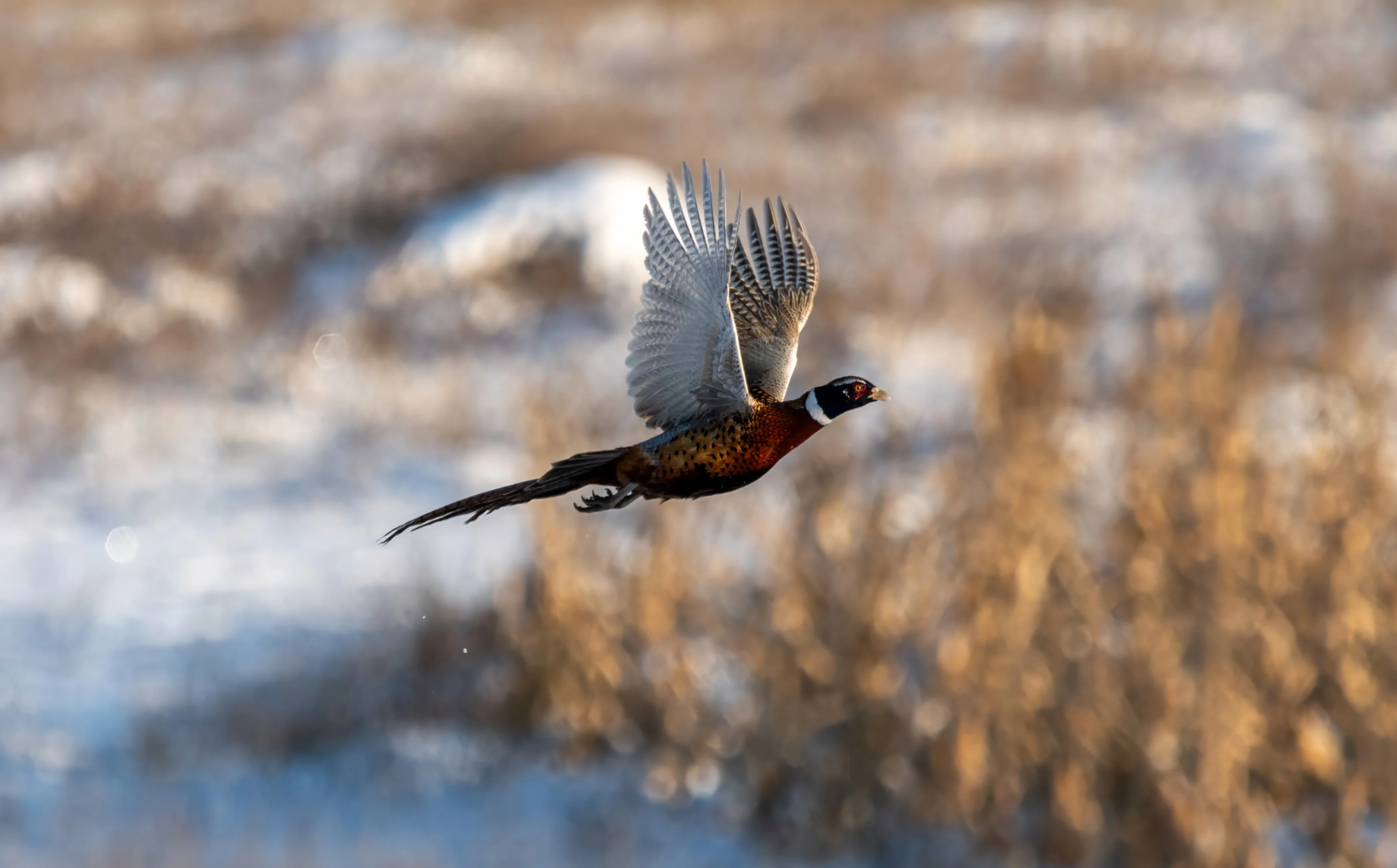
Food plots consisting of plants which provide windbreaks as well as sustenance such as corn and millet, in conjunction with stands of brushy cover, provide excellent habitat for upland game and a reprieve in tougher winters. DEO Photo by Seth Owens.
By Seth Owens
This winter has graced North Dakota with unusual kindness. The weather has been remarkably pleasant, boasting warmer temperatures than average and the snowfall has remained quite limited thus far. Such conditions bode well for our upland bird populations as they enjoy an abundance of cover and forage that harsh winter conditions of previous years often diminish.
However, it’s important to recognize that not all winters, present or future, will extend the same benevolence to us or our avian friends. Despite the current favorable conditions, we must not overlook the significance of providing good winter cover for our upland bird species.
Food Plots
The concept of food plots is relatively straightforward. By enhancing the availability of food in an area, we can support a higher population of pheasants. Yet, creating a well-structured food plot entails more than haphazardly scattering seeds on bare soil and crossing our fingers for success.
A well-planned food plot not only ensures sufficient forage throughout the winter months but also offers refuge from cold winds and snow, acting as thermal cover. Crops like millet, corn, and sorghum serve as excellent sources of winter forage. Additionally, taller crops such as corn and sorghum double as windbreaks, fostering areas devoid of heavy snow and shielded from the wind. Larger food plots spanning around 10 acres provide increased forage and winter shelter compared to smaller ones.
Woody Cover
While food plots are invaluable, they may not fully shield against harsh winter weather. Anyone who has spent time in cornfields during fall and winter knows that winds can still penetrate through. However, even partial coverage is immensely better than bare earth. To establish a sustainable refuge for upland birds, incorporating woody plants and trees is crucial.
Evergreen trees retain their wind-breaking capabilities throughout winter, making them invaluable assets. Nevertheless, they are not the sole option. Rows of brushy shrubs, such as lilacs, contribute significantly to wind coverage, particularly when interspersed with dense stands of hardwoods. Diversifying tree and shrub species within woody cover promotes habitat variation, benefiting various animals besides upland birds. It’s essential to recognize that establishing woody cover is a long-term investment.
Mixing Food Plots and Woody Cover
While food plots and woody cover are effective individually, combining both techniques creates a winter sanctuary for upland birds. Integrating sheltered food plots within stands of woody cover ensures the availability of forage even under deeper snow. This synergy provides birds with optimal thermal and wind protection from dense woody vegetation while minimizing travel distances to quality food sources.
Planning and establishing such integrated plantings require time and understanding of local winter wind patterns. By strategically positioning woody cover to block prevailing winds and snow, we optimize the effectiveness of these areas. Failing to consider wind dynamics could result in snow accumulation overwhelming food plots during inclement weather. Understanding this principle is paramount to the success of such endeavors.
Understanding the ways that we can positively impact the landscape and our upland bird populations gives me hope that we will be able to preserve these birds that so many memories have been made over. I look forward to the future where these “micro-habitats” hold pockets of dense upland game populations and are able to support lasting experiences for the next generations.
Seth Owens is a Dakota Edge Outdoors contributing writer and the Education and Outreach Coordinator for North Dakota Pheasants Forever.
